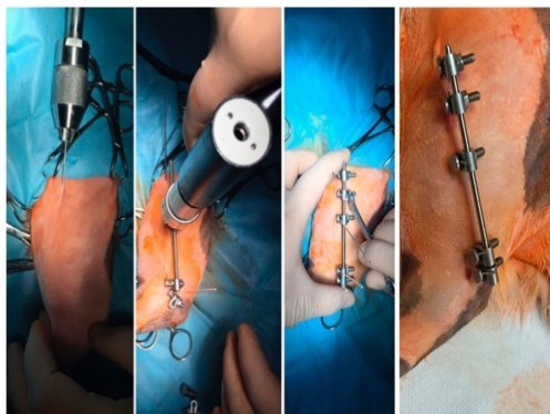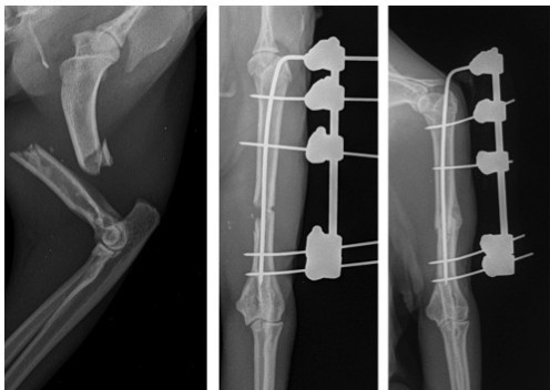Minimally Invasive Intramedullary Pin Tie-In External Fixation of the Humeral Bone in Cats
K. Zdeb1; P. Kowalczyk1; J. Sterna2; 0. Szalus-Jordanow2; I. Frymus2
Introduction
Nine cats with humeral diaphysis fracture were operated using an intramedullary pin tie-in technique with indirect reposition and minimally invasive implants.
Objectives
To observe the healing process after this minimally invasive osteosynthesis.
Methods
The reposition of the bone fragments was performed indirectly, only by palpating through soft tissues. Intramedullary pins and external fixation wires were put through stab incisions only.
| Figure 1 | 
Step-by-step placement of the minimally invasive implants through stab incisions.
|
|
| |
Intraoperative fluoroscopic control or distraction devices were not used. Control X-ray examinations were performed just after surgery, and then 4, 6 and 8 weeks post operation.
Results
In all cases, palpation of the bone fragments through soft tissues was sufficient for their successful reposition. Correct intramedullary pin placement was not difficult without fluoroscopy. The surgery time of these procedures was limited to less than one hour. During recovery, in all patients the external fixation did not limit the motion range of the leg. The mean healing time was 40 days (range 28–56), as assessed by radiology.
In all cases, the construct could be removed under sedation only.
| Figure 2 | 
The fracture line, post-operation image, and control at the day of implant removal. |
|
| |
Conclusions
Humeral factures in cats rarely involve the condyles. Most often the diaphysis is affected. In such cases intramedullary pin tie-in method provides a rigid fixation resulting in good conditions for healing. This external fixation method is very flexible and useful for various humeral fracture types, from simple transverse to severely comminuted.